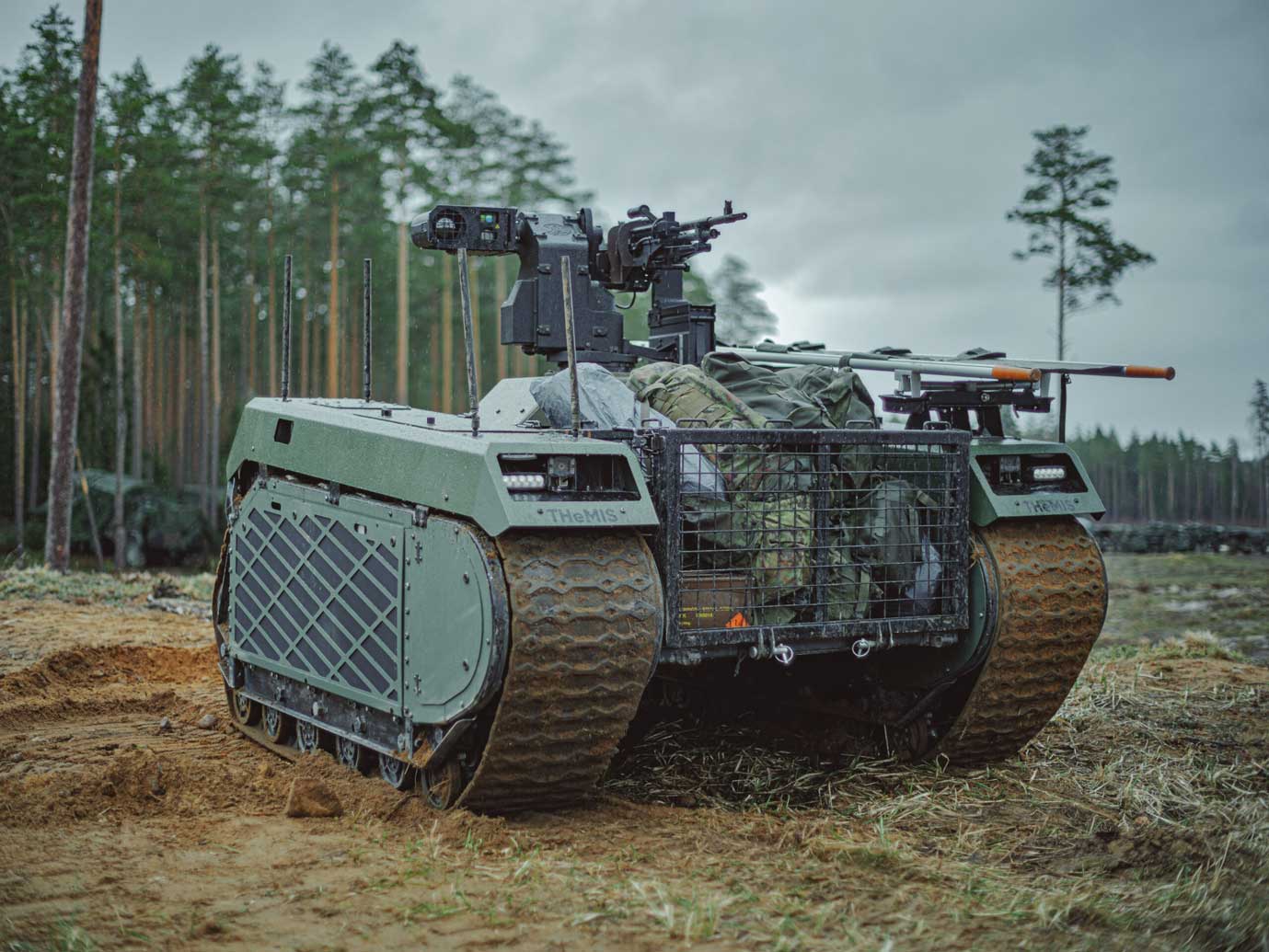THeMIS Unmanned Ground Vehicle at Special Forces Seminar in France
THeMIS Unmanned Ground Vehicle in Combat Support mode demonstrated at Special Forces Seminar in France.
29 June 2021

Unmanned ground vehicles: THeMIS
Milrem Robotics will demonstrate its THeMIS Combat Support unmanned ground vehicle (UGV) integrated with several third-party technologies at the Special Forces Operations Equipment Seminar (Sofins) exhibitionin France from June 29 until July 1. The THeMIS Combat Support is an unmanned ground vehicle that can be easily integrated with the deFNder® Light remote weapon system by FN Herstal.
The deFNder® Light is the lightweight remote weapon station of FN Herstal's RWS family. The THeMIS can integrate all FN Herstal machine guns up to 7.62mm calibre and is capable of extreme elevation and depression angles of operation.
The main purpose of the THeMIS Combat Support is to assist defence forces, especially special forces and special intervention police units in high threat, riot control and counter-terrorist urban environment scenarios. The system also includes a stretcher for CASEVAC and enough room to store a squad’s gear or extra equipment and weapons.
How the TheMIS works
Milrem Robotics’ research and development director and former soldier Jüri Pajuste explains how the THeMIS could have potentially been used in Afghanistan. “Because Afghanistan's battlefield was very canalized and we could not take our armour with us, everything a soldier could carry was what we went to battle with. Such a vehicle, even without a weapon system, would add a lot of operating distance, operating time and firepower."
The THeMIS Combat Support can be integrated into a Battle Management System with other aerial and ground unmanned and manned technology to provide commanders with a simple operational interface, enhanced situational awareness and direct and in-direct fire support.This capability will be demonstrated at Sofins together with Glenair and FN Herstal.
TheMIS UGV in Mali
The THeMIS UGV has proven itself in Mali during the French lead counter-terrorism operation Barkhane where it was deployed for 12 months. During the deployment, THeMIS traversed 1,200 km in one of the world’s harshest terrains of lava rock soil and climates climbing to 50 degrees Celsius in the shade. The UGV was operational for over 330 hours.
Watch the THeMIS Combat Support in Action